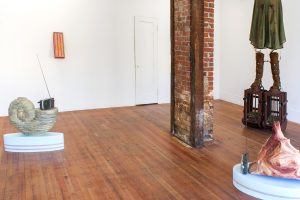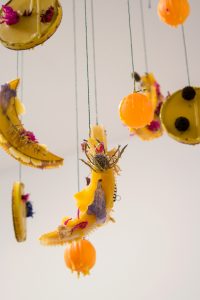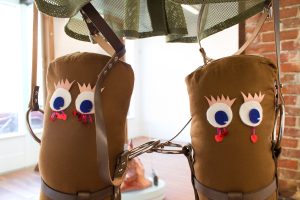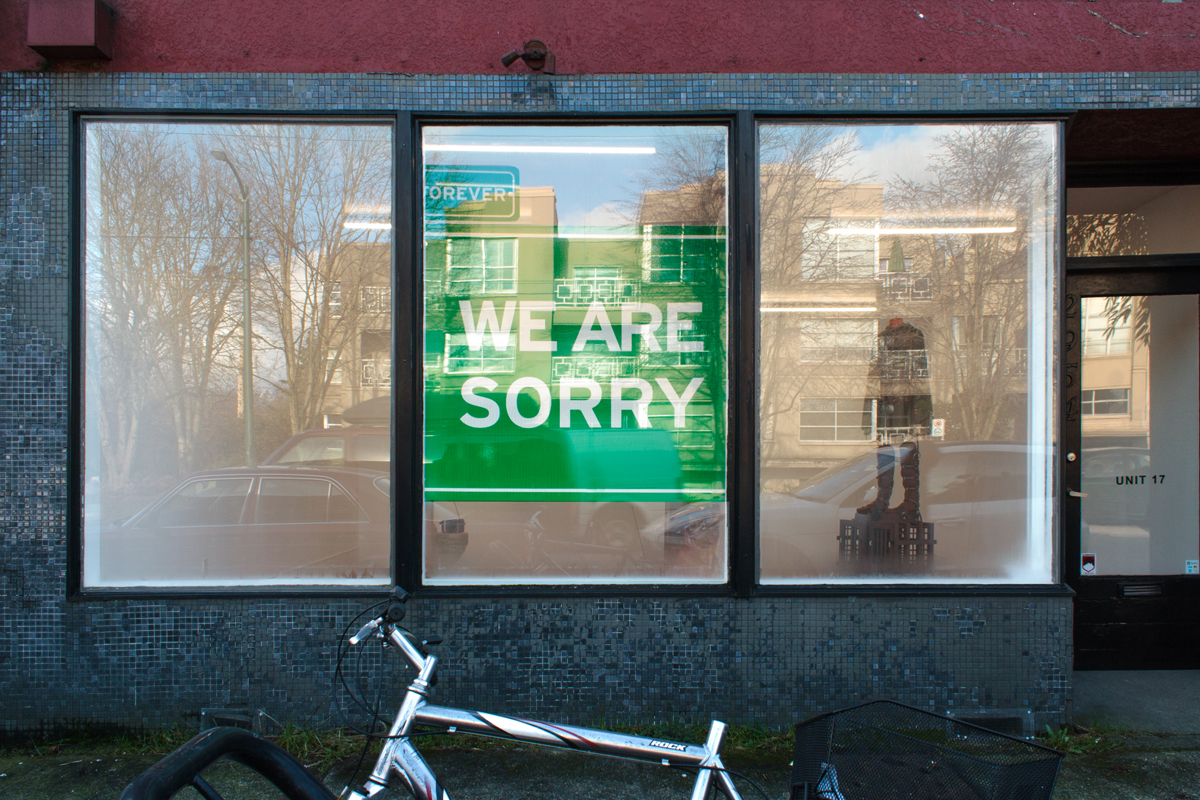Crocodile Tears, presented by Unit 17, shares commentary on modern-day capitalism. The exhibition features three installations from a collection of multidisciplinary creators, in addition to a live performance by Lucien Durey and Bess Durey. Rapid industrialization and mechanization is a common theme for Unit 17, while the title itself — Crocodile Tears — is an agent for insincere emotional expression. This exhibition pokes at how global superpowers react to industries of mass destruction — such as factory farming — while also addressing the rapid corporatization of our communities. How privatization is hand-in-hand with mechanization. With the words “I am sorry,” displayed in parody of a phoney sympathy towards these global issues, the artists involved in Crocodile Tears are unapologetic in their critique of rapid industrialization.

Crocodile Tears also celebrates Unit 17’s third anniversary. The scope of which is to mimic the theatrical phenomena of every day, connecting nature with technology in a single, pan-generational, exhibition. The display utilizes performance-based art as well as sculpture, painting, audio and video. With the anniversary — and by remodelling how the space of the gallery serves this realm of thinking — Unit 17 continues to create exhibits such as this, which blend art discourse within the context of life itself. The exhibit addresses the unified experience of neo-liberal economic globalization, with works from 14 different artists (Alan Belcher, Mike Bourscheid, Gabi Dao, Lucien Durey, Deborah Edmeades, Babak Golkar, Neil Haas, Karilynn Ming Ho, Nadya Isabella, Anne Low, Isabelle Pauwels, Shahin Sharafaldin, Douglas Watt and Elizabeth Zvonar.)

In Gabi Dao’s Curled Up in a Spiral, a white-pink structure holds up a rock upon which sits an old-school radio playing audio. On another framework, rests a radio with an antenna. The installation could be read as memorabilia from a vacation, and the rise of tourism is a direct result of a globalized world. This utilization of props in the installation encourages the viewer to think critically about entertainment and tourism. Globalization reoccurs in the work Skyline, by Lucien Durey. There are cascades of yellow fruit-shaped objects, owing themselves to compost bins, and adorned with pressed flowers. The works are attached with strings to a dish rack and splashed with red paint. The banana motif resurfaces in previous artwork and sculpture, and the vibrant colours resurface in Lucien’s other works, as a necessary element.
As you peer into the gallery from the street, a green highway street sign painted with the words “WE ARE SORRY” greets you. With closer observation, the term “forever” looms above the apology. The title Made in Canada comes as no surprise — artist Babak Golkar’s piece intertwines nicely into the theme of mechanization. It brings the highway indoors and places it residentially, allowing drive-by cars and people to see the profound apology.

Adjacent to the door stands a mannequin atop a chicken box filled with grass, created by Mike Bourscheid, who’s work reoccurs in each installment of the exhibition. In this piece, Bourscheid presents a costume-like installation by draping a cape over a mannequin body, and attaching an O-ring bearing cooking instruments, ingredients and cutlery. The work also features gladiator strapped up sandals, reminiscent of Greek-antiquity. The composite of the piece suggests a discourse on industrialized farming, by its use of materials such as metal skewers, garlic and chicken feathers. Stitched onto the foam leg-forms are eyes that stare back at the viewer — recognizing their gaze, and therefore, participation in the work.
Crocodile Tears was expected to have a changeover of new work exhibited on March 27, however, due to closures for the safety of the community, Unit 17 is now empty of human observation. How can art create a conversation, or change thinking, without the intervention of human meditation? Especially as it aims to critique the consequences of the current climate — human intervention, viewership, is necessitated. The exhibition, lasting until April 19th, will be unfortunately impossible to view in person, though pictures are accessible online to keep the conversation alive.
Crocodile Tears was to run at Unit17 January 31 – March 28, but has now been extended until June 7. Find out more about the exhibit and keep updated here. Some of the exhibition is available virtually; Installation View One, Installation View Two.


